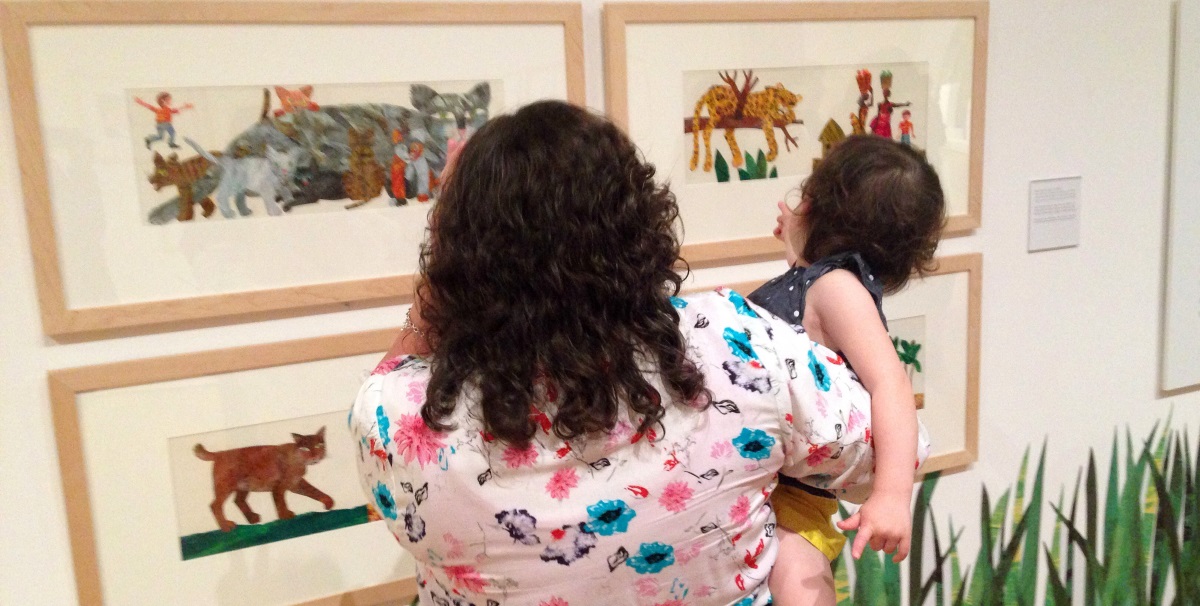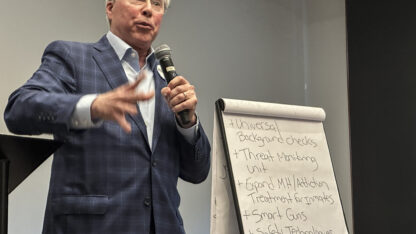Exhibit Explores Eric Carle’s Colorful Children’s Book Art

Kate Brumback / AP Photo
The depth of work that goes into writer and artist Eric Carle’s books for children might surprise you.
The author’s works are on display now at the High Museum in a show called “I See a Story.” In it, audiences can get a closer look at some of the original work that became beloved books like “The Very Hungry Caterpillar” and “Brown Bear, Brown Bear, What Do You See?”
Lois Reitzes recently spoke with two of the show’s curators, Virginia Shearer and Ginia Sweeney, about the depth behind the colorful illustrations.
Carle was born to German immigrants in Syracuse, New York, but his parents moved back to their home country in 1935, when Eric was 6 years old. There, the Nazi party had suppressed many artists and works of art, which they labeled “degenerate.”
Amidst the hardships of growing up in Nazi Germany, Carle’s high school art teacher, Herr Krauss, opened up another world to the promising young student.
“He secretly took him to his home one day,” Sweeney recounts, “and showed him a box of this art that was banned. It was actually a very dangerous thing for him to do. But he thought it was really important for Eric Carle to expand his understanding of what art could be.”
The “degenerate” works included art by Paul Klee, Wassily Kandinsky, Henri Matisse and many others. Seeing these works for the first time had a profound and lasting impact on the young Carle.
“He said that ‘the strange beauty of this art almost blinded [me],’” says Sweeney.
“I See A Story: The Art of Eric Carle” is on display at the High Museum through Jan. 9.
9(MDAxODM0MDY4MDEyMTY4NDA3MzI3YjkzMw004))





